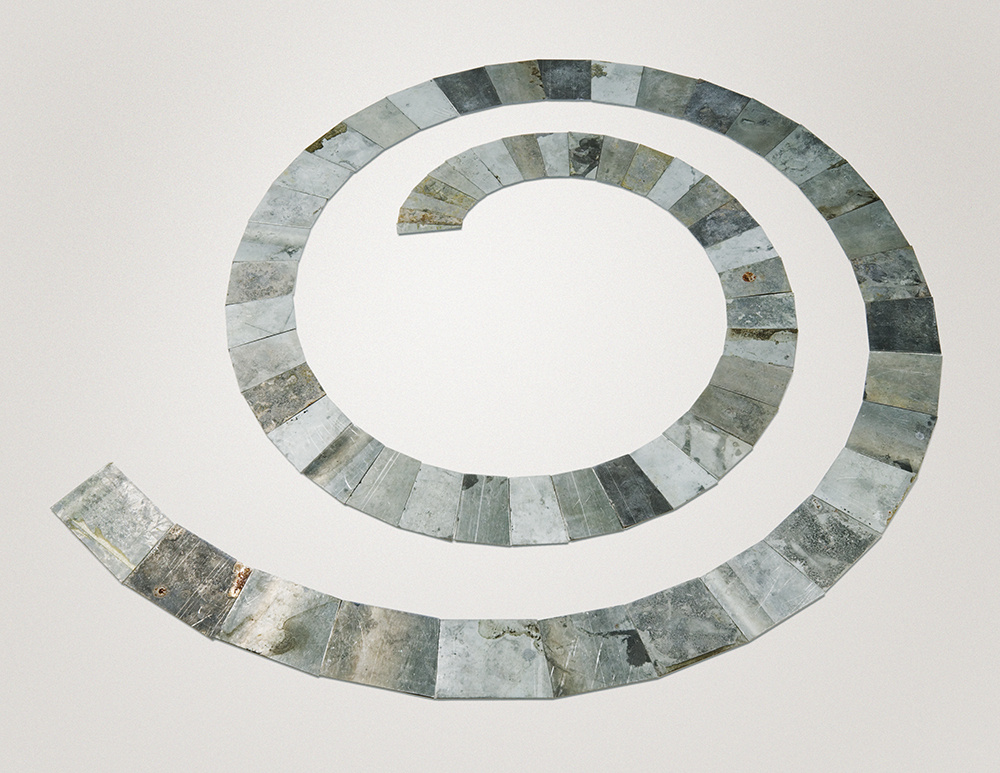The title of Carl Andre’s Smithsonite Spiral is a pun–a playful use of language that is typical for Andre, who is a poet as well as an artist. It refers to his friend, the sculptor Robert Smithson (1938-1973) and to his best-known site-specific work, Spiral Jetty, (1970), a coil of salt-encrusted black basalt and earth, situated in an abandoned oil-drilling site in the Great Salt Lake, Utah. Andre and Smithson both engaged with the natural world through using raw minerals in their work, but their approaches differed. Andre’s Smithsonite Spiral is composed from zinc, an irreducible element whose physical presence and chemical makeup emphasizes durability and permanence. By contrast, Smithson’s Spiral Jetty, as a fragile earthwork that has been submerged periodically by the waters of the Great Salt Lake since its creation, explores the theme of entropy–the tendency of matter and energy to degrade into a state of disorder. As Andre later put it: “It is as if Bob took the rational, Faustian dream of man ordering nature into a re-found and progressive Eden, and knowing its futility he sought instead to build some corners of hell here and there . . .”
Not on view
Date
1973
Classification
Sculpture
Medium
Zinc plated steel
Dimensions
Overall: 30 × 27in. (76.2 × 68.6 cm)
Accession number
2008.324a-mmm
Credit line
Whitney Museum of American Art, New York; gift of the Estate of Robert Smithson
Rights and reproductions
© Holt-Smithson Foundation / Licensed by VAGA at Artists Rights Society (ARS), New York

